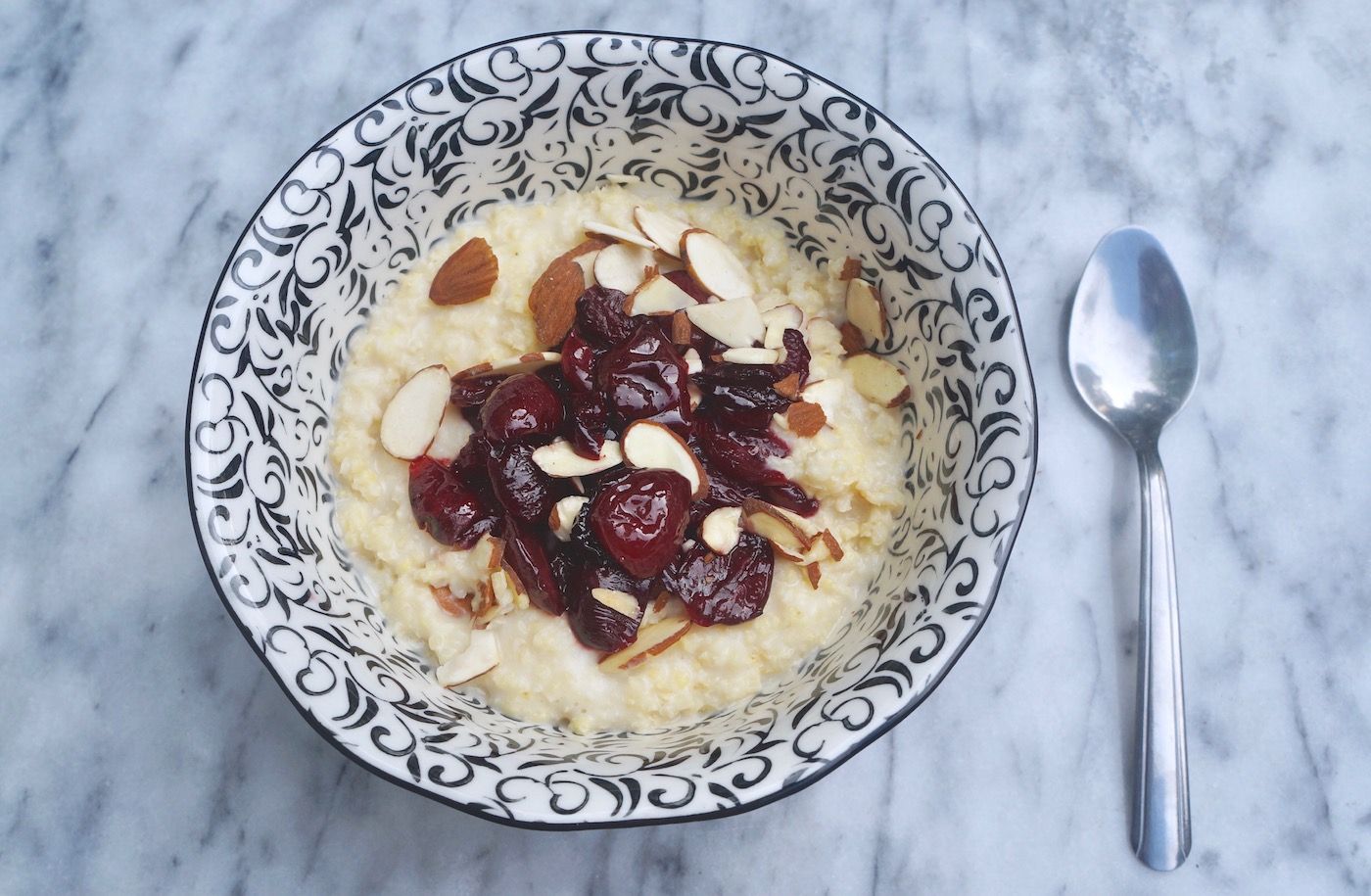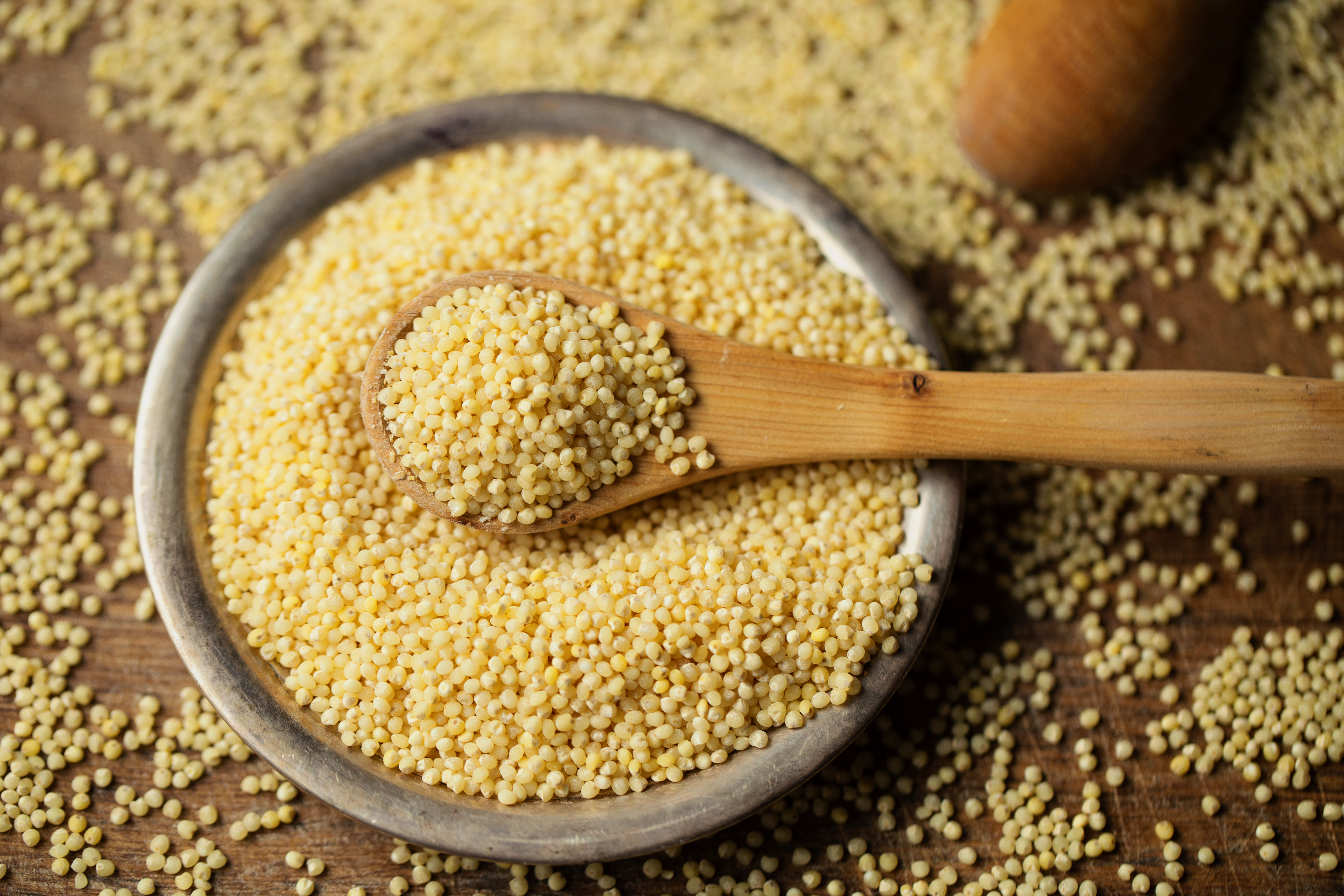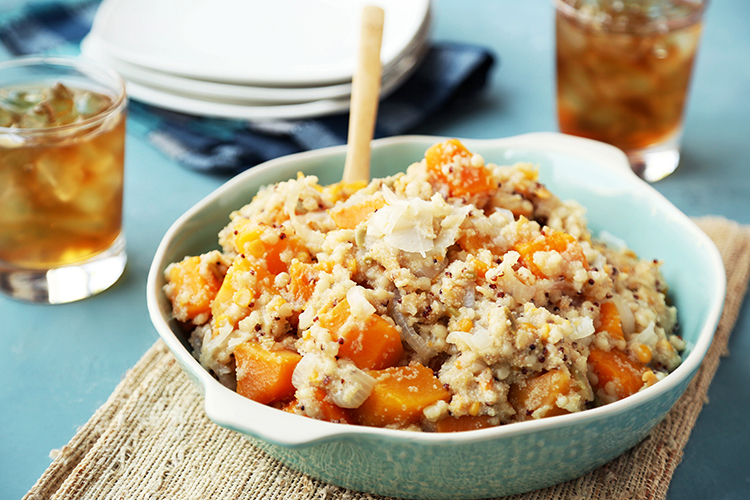Share This
In February, we introduced you to the ancient grain sorghum via our interview with the United Sorghum Checkoff Program. This month, we’re excited to discuss another versatile, nutrient-packed ancient grain: millet!
What is millet?
One of the world’s oldest cultivated crops, millet is a true ancient grain. Technically a group of grains, varieties of millet have been consumed by humans for at least 7500 years, making appearances at archaeological sites in Asia and Africa. Once widely grown, millet is now mainly familiar in Western diets as a specialty food, though it is still extremely important as a drought-resistant crop in arid regions of some countries, notably India, Nigeria, and Niger. Millet’s low water requirements also make it a great choice for those aiming to include more sustainable crops in their diets.
Okay, but how does it taste?
Millet is highly versatile. The flavor is mild and slightly nutty, making it an excellent addition to both sweet and savory meals. Millet flours can also be used in gluten-free baking as a substitute for conventional flour. The grains are petite and round, varying slightly in size and texture from variety to variety. Depending on the amount of water and cooking time, millet can be fluffy and light, almost like couscous, or creamy and rich like porridge.
Tell me about the health benefits
Like most whole grains, millets are dense in important nutrients, minerals, and fiber. In particular, they are an excellent source (20% or more of recommended daily value) of manganese, a trace mineral that when combined with other essential vitamins can promote bone and brain health, and helps regulate inflammation.
In terms of more specific health benefits, numerous peer-reviewed studies have been done on millet’s relation to everything from cholesterol to antioxidants, but it is of particular interest to scientists for its effects on blood-sugar and diabetes. Due to their low glycemic index compared to other grains, millets have been shown to have a positive effect on lowering the blood sugar of diabetic patients. A meta-analysis published in 2021 reviewed over 50 years of research into millet and diabetes and concluded that consuming millet in the long term lowered blood sugar levels significantly in diabetic subjects.
I want to know more!
The Whole Grains Council has plenty of resources to help you learn about and eat more millet!
-
For an even deeper dive on its history and nutrition, check out our Grain of the Month article on millet and teff.
-
If you’re inspired to get cooking, our recipes page can be searched by ingredient (pro tip: try searching for teff as well– a type of millet that’s so well-known by its varietal name that we list it separately!)
-
Looking for Stamped products containing millet? We’ve got you covered!
Stay Tuned for More on Millets in 2023
2023 has been declared the International Year of Millets by the United Nations, so you’ll be hearing much more about these small-but-mighty ancient grains in the coming year. Keep an eye on the North American Millets Alliance for more information about the activities being organized in our region of the world.
Are you interested in adding millet to your grocery list? Maybe you’ve got a killer recipe for millet pancakes? Let us know below! (Rebecca)
To have our Oldways Whole Grains Council blog posts (and more whole grain bonus content!) delivered to your inbox, sign up for our monthly email newsletter, called Just Ask for Whole Grains.




Add a Comment